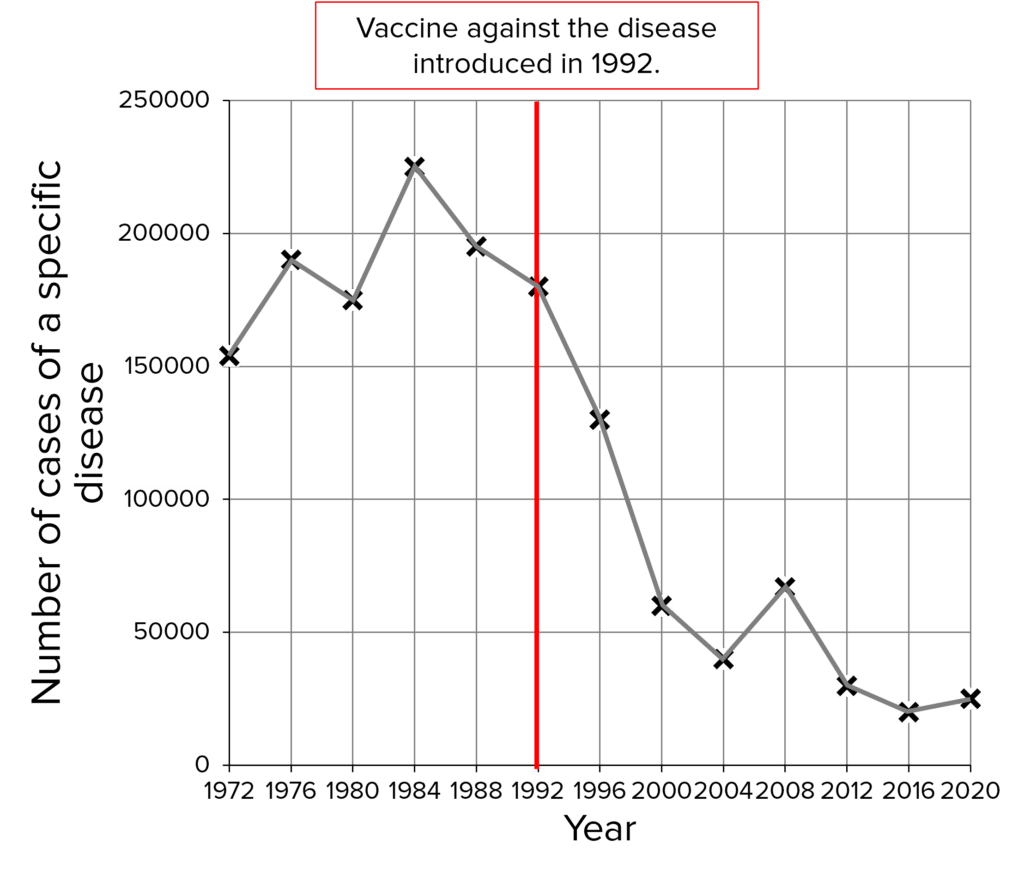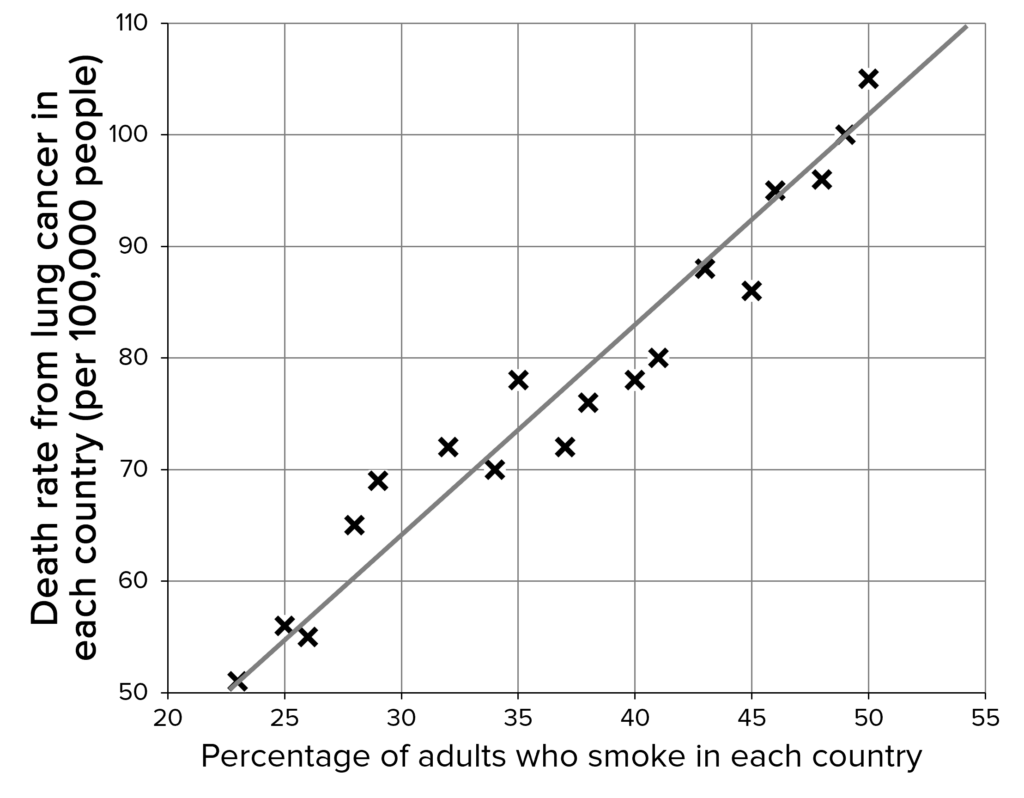Health Issues
Health Issues Revision
Health Issues
Health is the state of physical and mental well-being. Ill health is caused by many factors including diseases, both communicable and non-communicable. Diseases can interact and cause further health issues. Different risk factors increase the chances of an organism getting a disease.
Health
Health is the state of physical and mental well-being and can be affected by a number of factors:
- Disease is the main cause of ill health and can be communicable or non-communicable.
- A healthy balanced diet is essential in order to supply the body with the correct amounts of nutrients. Poor diets can impact both physical and mental health.
- Prolonged, high levels of stress can lead to health issues, e.g. cardiovascular diseases and mental health issues.
- Life situation has a major impact on health. People who do not have access to medicines, vaccines, food, clean water and other supplies are more at risk of getting certain diseases and may have impacts on their mental health, e.g. having access to condoms reduces the risk of getting a sexually transmitted disease.
Communicable and Non-communicable Diseases
Diseases can be communicable or non-communicable.
Communicable diseases, also known as infectious or contagious diseases, are those that spread between organisms, e.g. human to human or animal to human. They are often caused by pathogens such as bacteria, viruses, parasites and fungi. You will need to know how certain examples of communicable diseases are spread between organisms and how the body defends against the pathogens.
Non-communicable diseases are those that are unable to spread between organisms. They are not caused by pathogens, are usually long-lasting and often get worse over time. Some examples are asthma, cancer and coronary heart disease.
There are many human and financial costs of non-communicable diseases:
- Poor quality of life, reduced lifespan and death.
- Emotional impacts on family and friends.
- Financial cost of healthcare, research and treatments. This cost may be covered by a healthcare provider (in the UK it is paid by the NHS) or attributed to the individual.
- Further financial costs if families have to move or adapt their home to better fulfil the patients needs and cost of frequent travel to the hospital.
Disease Interactions
Different diseases can interact and cause further health issues:
- People who have a problems with their immune system (such as people with HIV) will struggle to fight off pathogens so will be more susceptible to infectious diseases.
- Some viruses can trigger types of cancer e.g. the HPV virus infects cervical cells and in some cases causes cervical cancer.
- Immune responses initially triggered by pathogens can trigger allergic reactions, such as rashes and asthma. This called an overactive immune response.
- People who have severe physical ill health often develop depression and various other mental illnesses.
Disease Risk Factors
Risk factors increase the chances of an organism getting a particular disease. They can be a certain aspect of a person’s life, such as amount of regular exercise or diet, or the presence of a certain substance in the environment or body, such as air pollution.
You cannot assume that a risk factor has caused a disease just because there is a correlation. Scientists must investigate the mechanism behind the causation in order to come to a decisive conclusion.
Scientists have concluded that:
- Smoking, poor diet and lack of regular exercise all increase the likelihood of a person developing cardiovascular disease.
- Obesity is a risk factor for type 2 diabetes.
- Consuming large amounts of alcohol increases the risk of liver disease and impaired brain function.
- Smoking increases the probability of developing lung disease or lung cancer.
- Smoking and drinking alcohol when pregnant affects the development of foetuses.
- Exposure to carcinogens, such as x-rays, increases the risk of cancer.
Many diseases are caused by a combination of different factors.
The incidence (number of cases) of non-communicable diseases varies with location due to access to different foods, alcohol and cigarettes. On a global level, people in developed countries have money to buy foods that are high in fat which increases their risk of developing cardiovascular diseases. Nationally, people from deprived areas are more likely to smoke, have poor diet and exercise less which increases the incidence of cardiovascular diseases and type 2 diabetes.
Principles of Sampling
Sampling allows scientists to study potential risk factors for a disease in a population without investigating every individual person. They may do this using medical records or carrying out surveys.
Samples must be representative of the whole population being studied. To achieve this, the study should cover all groups within the population and must be random within the groups.
It is also important to take into account other factors such as variations between people of different ages, genders and lifestyles. Separate analysis of sub-sets of data can be performed to investigate the effect of these factors and data can be adjusted to allow better comparisons between groups.
Samples may be taken at regular time intervals.
Displaying and Interpreting Trends in Data
Graphs and statistics are used to visualise and analyse patterns in the sampled data. You should be able to interpret different types of graphs:

- Graphs can be used to display numerical data about the incidence of diseases. Looking at trends in the data can help scientists better understand the spread of diseases and predict how the incidence of the disease may change in the future. The graph on the right shows that the number of cases of a disease decreases after the introduction of a vaccine.

- A correlation is a link between two variables and can be easily identified from scatter diagrams. If the variables correlate, a line of best fit can be drawn. The graph on the right shows how the death rate from lung cancer is correlated to smoking. Each point on the graph represents data from a different country. You can see that there is a positive correlation because as the number of adult smokers increases, the death rate from lung cancer also increases. Remember correlation does not always mean that the factor is causing the outcome, further investigation of the mechanisms involved is required to come to this conclusion.
- Frequency tables, frequency diagrams, bar charts and histograms can also be used to visualise the effect of specific risk factors on diseases and how the risk factors can interact.
Health Issues Example Questions
Question 1: What is health?
[1 mark]
Health is the state of physical and mental well-being.
Question 2: What is the difference between communicable and non-communicable diseases? Name one example of each.
[3 marks]
Communicable diseases can be spread between organisms, non-communicable diseases cannot.
Communicable disease examples:
- Influenza (flu)
- Measles
- Chicken pox
- Covid-19
- Sexually transmitted diseases
- etc.
Non-communicable disease examples:
- Asthma
- Cancers
- Coronary heart disease
- etc.
Question 3: Name 2 risk factors associated with cardiovascular disease.
[2 marks]
Any two from:
- Smoking
- Poor diet
- Lack of exercise






